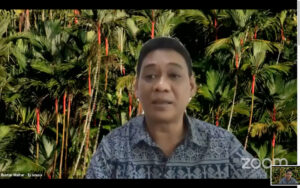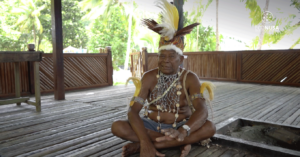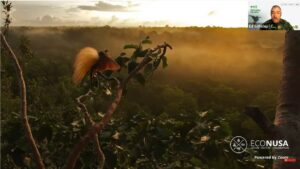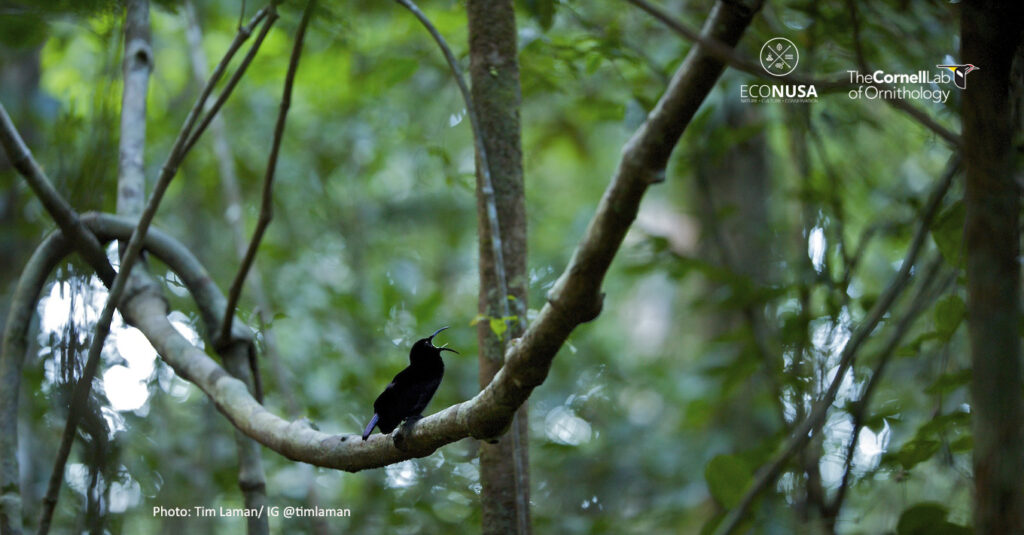
The nature ecosystem in Tanah Papua spreads throughout the underwater ecosystem, coastal, lowland, plateau to snow-covered mountains. According to the forming geographical history, the ecosystem complexity and diversity affect the number of endemic flora and fauna in Tanah Papua, including cenderawasih or birds-of-paradise. Their rainforests support biodiversity, diverse species of flora and fauna. Most of them are endemic species that cannot be found anywhere on earth, and even in other parts of Indonesia.
Complex and Diverse Ecosystem
Cenderawasih University rector, Apollo Safanpo, explained there were three mainland ecosystem forms in Tanah Papua. “There are three major ecosystems, the coastal, lowland, and plateau ecosystem,” Apollo mentioned to EcoNusa. Those ecosystems formed various habitats, such as mangrove forest, swamp forest, and mountain forest.
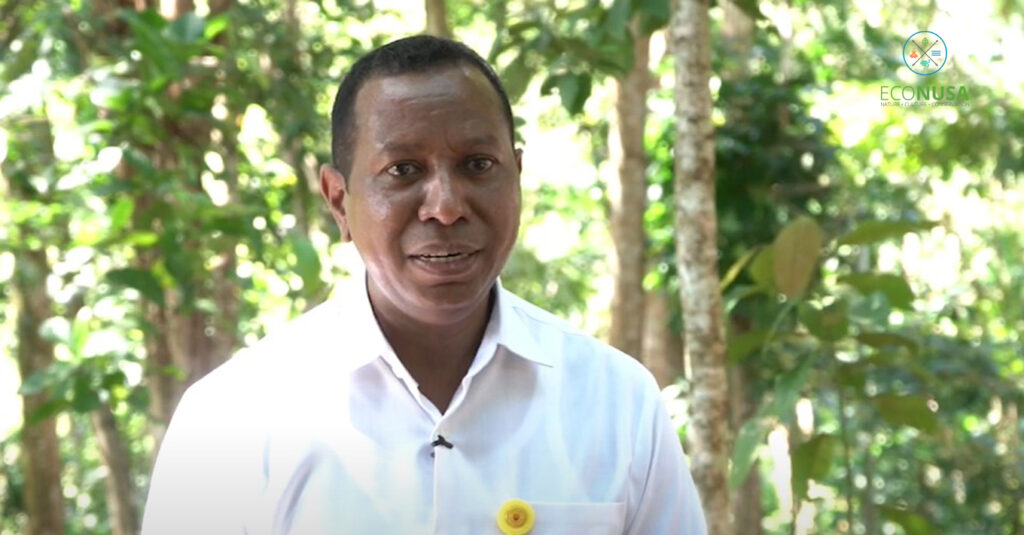
Tanah Papua and Maluku Islands are deemed special because they have remarkable diversity of habitats. Forests in the mountainous Tanah Papua are home for many unique species, such as cenderawasih, parrot, and other unique birds. Various kinds of mammals, insects, frogs, and fish also live there.
An ecologist from Cenderawasih University, Hendra K. Maury said that Tanah Papua has abundant natural resources in terms of biodiversity and its function that remains unexplored. In addition, Tanah Papua also has unique and highly complex ecosystems.
“The ecosystem in Papua is very unique due to its complexity. From coastal to 4.000-meters-above-sea-level mountains in Jayawijaya with their everlasting snow cover. It is remarkably complex. It also causes a high number of endemicity in Papua. Talking about endemicity, if seen from geological to geographical histories, certain ecosystem areas in Papua have hotspots for their endemic flora and fauna,” Hendra said.
With the diversity of endemic flora and fauna that is only found in specific area, it makes the region special and distinctive. From a scientific point of view, the higher the endemicity (the number of endemic flora and fauna), the more potentials to explore and study will be to identify the role and benefit for the sake of ecosystem and human life stability. From an economic point of view, the high number of endemic species could provide contribution to ecotourism practised by the indigenous people.
Endemicity and Diversity of Cenderawasih
Cenderawasih University rector, Apollo Safanpo, explained there were three mainland ecosystem forms in Tanah Papua. “There are three major ecosystems, the coastal, lowland, and plateau ecosystem,” Apollo mentioned to EcoNusa. Those ecosystems formed various habitats, such as mangrove forest, swamp forest, and mountain forest.
Tanah Papua and Maluku Islands are deemed special because they have remarkable diversity of habitats. Forests in the mountainous Tanah Papua are home for many unique species, such as cenderawasih, parrot, and other unique birds. Various kinds of mammals, insects, frogs, and fish also live there.
An ecologist from Cenderawasih University, Hendra K. Maury said that Tanah Papua has abundant natural resources in terms of biodiversity and its function that remains unexplored. In addition, Tanah Papua also has unique and highly complex ecosystems.
“The ecosystem in Papua is very unique due to its complexity. From coastal to 4.000-meters-above-sea-level mountains in Jayawijaya with their everlasting snow cover. It is remarkably complex. It also causes a high number of endemicity in Papua. Talking about endemicity, if seen from geological to geographical histories, certain ecosystem areas in Papua have hotspots for their endemic flora and fauna,” Hendra said.
Read also: Cenderawasih Significance in Rainforest Stability
With the diversity of endemic flora and fauna that is only found in specific area, it makes the region special and distinctive. From a scientific point of view, the higher the endemicity (the number of endemic flora and fauna), the more potentials to explore and study will be to identify the role and benefit for the sake of ecosystem and human life stability. From an economic point of view, the high number of endemic species could provide contribution to ecotourism practised by the indigenous people.
Endemicity and Diversity of Cenderawasih
The ecosystem and habitat diversity lead to the diversity of bird species including birds-of-paradise. As from forty species of birds-of-paradise in the world, twenty-eight of them are in Indonesia, specifically in Tanah Papua and Maluku Islands.
Most of those twenty-eight species are found in Tanah Papua. Some even spread narrowly. “Some of them are only found in Papua. It means they do not live in other regions of New Guinea Islands (including Papua New Guinea). Some species are only found in Arfak Mountains or Raja Ampat. Some others are in Maluku Islands,” said Ed Scholes, an ornithologist of Cornell Lab of Ornithology.

There are seven endemic species of cenderawasih live in certain areas in Tanah Papua. They are Red Bird-of-Paradise (Paradisaea rubra) and Wilson’s Bird-of-Paradise (Cicinnurus Respublica) that live in Raja Ampat, Western Parotia (Parotia Sefilata), Long-Tailed Paradigalla (Paradigalla carunculata), Vogelkop Superb Bird-of-Paradise (Vogelkop lophorina) and Arfak Astrapia (Astrapia nigra) that live in Arfak Mountains, and Bronze Parotia (Parotia berlepschi) that is only found in Foja Mountains. While in Maluku Islands, there are only two endemic species of cenderawasih, Halmahera Paradise-Crow (Lycocorax pyrrhopterus) and Standardwing Bird-of-Paradise (Semioptera wallacii).
“Thus, the reason for having more endemic species of cenderawasih in Tanah Papua than in Maluku Islands with its only two endemic species, is due to the fact that the complexity and diversity of the ecosystem in Tanah Papua are higher than that of in Maluku Island,” Hendra explained. The variety of color differences and characteristics of cenderawasih are closely related to the various ecosystem conditions.
Read also: Ridho Hafiedz Captivated by Birds-of-Paradise in the Land of Papua
Tim Laman, a wildlife photographer and videographer who worked alongside Ed Scholes to document birds-of-paradise in Tanah Papua and Maluku Islands, said cenderawasih represented the species diversity in one family. “They are the most diverse family of birds in the world. They have various and magnificent colors, sizes, shapes, and displays,” he said.
No Forest Ecosystem, No Birds-of-Paradise
Cenderawasih really relies on the rainforest in Tanah Papua and Maluku Islands as their habitats, particularly the endemic species. Apollo said the endemic cenderawasih found difficulties in adapting to nature in other area due to their close ties with rainforests in Papua and Maluku which are adaptable to these birds.
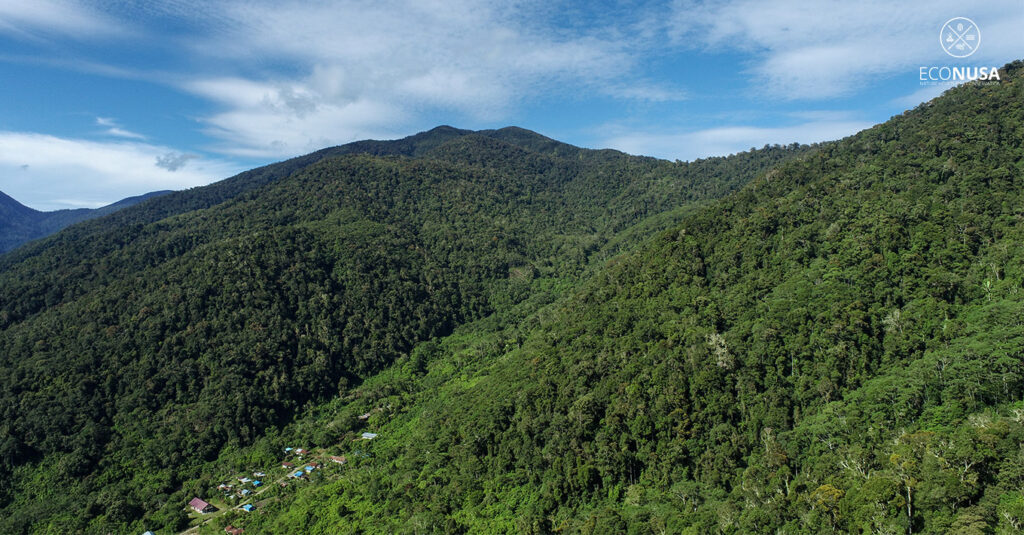
“So, if deforestation keeps going and forests disappear, cenderawasih will surely become extinct,” Apollo asserted. He added that it requires strict regulation and control to protect the forest and cenderawasih habitat so there will be no more land use changes. According to Hendra, the biggest challenge for preserving cenderawasih and its habitat is in the lowland and islands areas since they are susceptible for land use changes due to intensive human activities done there. Therefore, collective efforts are needed to protect rainforest from incessant loss and deforestation.
Editor: Leo Wahyudi


